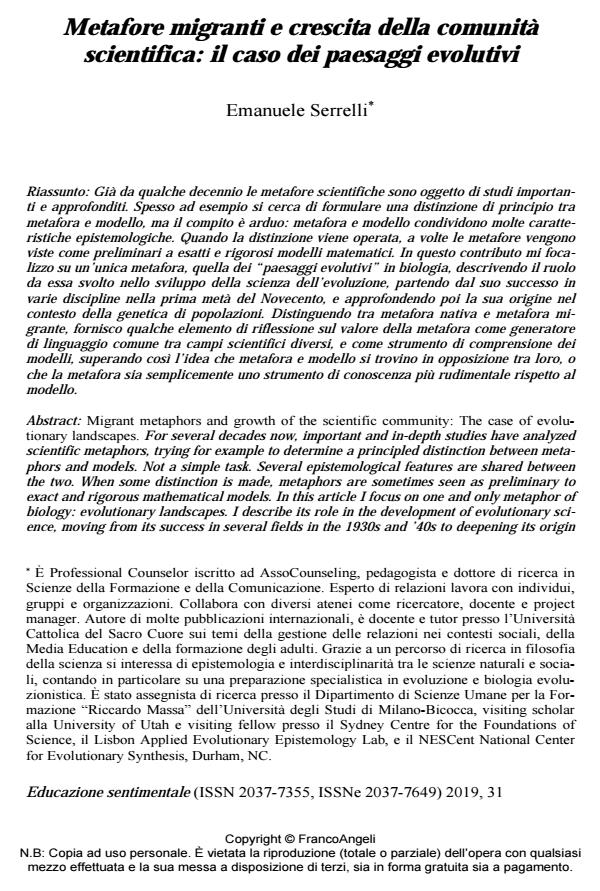Metafore migranti e crescita della comunità scientifica: il caso dei paesaggi evolutivi
Journal title EDUCAZIONE SENTIMENTALE
Author/s Emanuele Serrelli
Publishing Year 2019 Issue 2019/31
Language Italian Pages 14 P. 115-128 File size 206 KB
DOI 10.3280/EDS2019-031010
DOI is like a bar code for intellectual property: to have more infomation
click here
Below, you can see the article first page
If you want to buy this article in PDF format, you can do it, following the instructions to buy download credits

FrancoAngeli is member of Publishers International Linking Association, Inc (PILA), a not-for-profit association which run the CrossRef service enabling links to and from online scholarly content.
Migrant metaphors and growth of the scientific community: The case of evolutionary land-scapes. For several decades now, important and in-depth studies have analyzed scientific metaphors, trying for example to determine a principled distinction between metaphors and models. Not a simple task. Several epistemological features are shared between the two. When some distinction is made, metaphors are sometimes seen as preliminary to exact and rigorous mathematical models. In this article I focus on one and only metaphor of biology: evolutionary landscapes. I describe its role in the development of evolutionary science, mov-ing from its success in several fields in the 1930s and ’40s to deepening its origin in the con-text of population genetics. By drawing a distinction between native and migrant metaphor, I provide some elements of reflection on the value of metaphor as a generator of common lan-guage between separated scientific fields, and as a tool for understanding models. In this way I also suggest overcoming the model vs. metaphor opposition, especially the idea that meta-phors are a more rudimental knowledge tool than models.
Keywords: Model, metaphor, scientific language, evolution, adaptive landscape.
Emanuele Serrelli, Metafore migranti e crescita della comunità scientifica: il caso dei paesaggi evolutivi in "EDUCAZIONE SENTIMENTALE" 31/2019, pp 115-128, DOI: 10.3280/EDS2019-031010